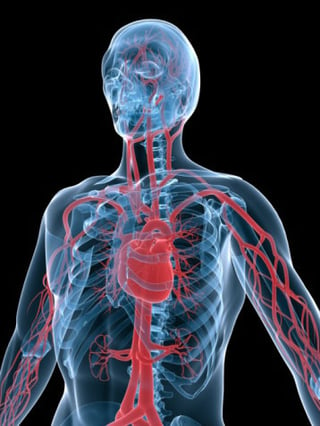11 Fascinating Blood Flow Facts from the Human Body
By Susan Eymann, MS09 Dec 2015

The circulatory system in the human body stretches 66,000 miles, more than two and a half times the circumference of the Earth.
- The heart beats 2.5 billion times during the life of a 75-year-old.
- The heart expels 2 ounces of blood with each beat, five quarts of blood each minute, 220 million quarts in 70 years.
- Human blood retains a link to ancient Cambrian seas; the same balance of salts and minerals that existed in the primitive oceans half a billion years ago is present in blood.
- Blood is a liquid tissue: fluid makes up more than half; plasma, white and red blood cells make up the remainder.
- Red blood cells (erythrocytes) are the body’s cellular lungs; their job is to ferry oxygen to every cell and remove carbon dioxide.
- If the red blood cells from one person were to be stacked in the sky, they would reach 31,000 miles.
- Each red blood cell has 270,000,000 hemoglobin molecules; each hemoglobin molecule can carry four oxygen molecules.
- The hemoglobin in red blood cells scoops up oxygen molecules in oxygen-rich tissues such as the lungs, and then releases them in oxygen-deprived tissues throughout the body.
- Each second we lose about 3 million red blood cells only to be replaced by the same number produced in the bone marrow.
- Venous blood that delivers carbon dioxide back to the lungs makes up 75 percent of blood flow at any given moment.
- Blood flow measurement is vital because it provides a window into the delivery of oxygen and nutrients to body organs and cells.
Source: The Incredible Machine (1992), National Geographic Society, Washington, D.C.




